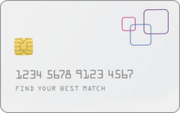The content on this page is accurate as of the posting date; however, some of the offers mentioned may have expired.

Consumer debt has hit the $1 trillion mark – and this is a first, according to a new study by WalletHub.com. This news comes after consumer debt reached $92.2 billion last year, which has not happened since before the Great Recession hit in 2007.
They also point out that this kind of spending upswing has only occurred four times in the last three decades, and during those times, charge-off rates went up the subsequent year. Right now, though, the charge-off rate is at a record low. With this in mind, lenders are on track to keep extending credit.
Statistics about consumer credit card debt are used to gauge how financially healthy American families are, but they can also indicate if an over-borrowing bubble may be forming. According to the study, this latest trend may not be good news, and consumers are embracing pre-recession spending habits.
Upswings and regressions
During the last quarter of 2017, consumers added $67.6 billion in credit card debt, making it the biggest upswing in the last 30 years. That's 68 percent more than the average credit card debt after the great recession.
In dollars and cents, this meant that consumers rang in 2018 with $92.2 billion in new credit card debt, which is 105 percent over the post-recession average.
What does this mean for the typical family's credit card balance? On average, families are carrying $8,600 in debt, which is $138 more than the amount WalletHub believes is sustainable and up from $8,131 during the last quarter of 2016. This represents a 6 percent upswing in credit card balances.
Tips for getting debt in check
All of this is food for thought when it comes to individual levels of credit card debt, and for those looking to avoid issues, there are things you can do to stay out of trouble.
First things first, WalletHub suggests making a budget and sticking with it. That said, ranking your expenses can help you keep on track, with payments and emergency fund savings an important part of the mix. Once everything is written down, you may see some areas where you can cut needless expenses.
Having an emergency fund is important. This way if anything unexpected happens, such as car repairs or medical expenses, you have a cushion to rely on. They suggest saving about a years' worth of income if you can.
Increasing your credit score is part of the equation, too. Why? It's pretty simple – the better your credit score, the cheaper your debt is. That can make it easier and faster to pay off.
Going with the Island Approach strategy is also one of their suggestions. What is it? It means using different credit cards for specific purposes. For instance, you can use a 0% APR balance transfer to reduce the cost of your current debt and pay it down.
On the other hand, you could use a rewards credit card to rack up miles that you can use for vacation, or you could use a cashback card to save on monthly expenses. But here the goal is to pay off those cards every month.






